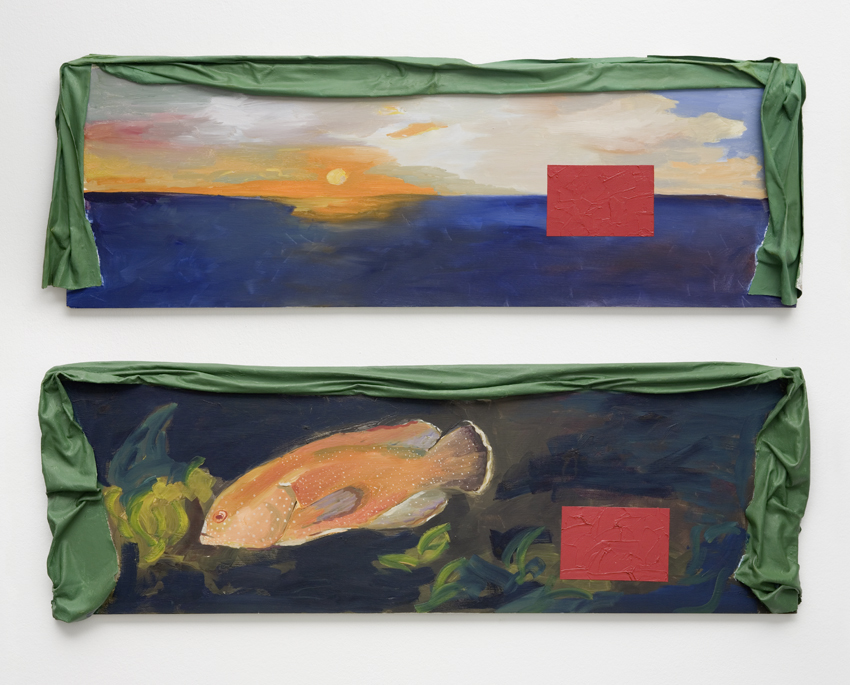
Ree Morton, Regional Piece, 1975-76. Oil on wood and enamel on celastic, Two parts, each 17 × 50 inches (43.2 × 127 cm). Gift of Barbara Lee, The Barbara Lee Collection of Art by Women. Courtesy Alexander and Bonin, New York. © Estate of Ree Morton
During an artistic career lasting only from the mid-1960s until her untimely death in 1977, Ree Morton produced work of remarkable breadth. While she achieved notable success in the 1970s, after her death she largely fell out of the art-historical purview, only to be “rediscovered” in recent years through her inclusion in such exhibitions as WACK! Art and the Feminist Revolution (2007). From delicate pencil drawings to expansive sculptural installations, her work forges unlikely partnerships between such aesthetic and political practices as minimalism, feminism, and regionalism. The modular units familiar from minimalism are not the clean products of industry, but ribbons, curtains, portraits, hand-painted logs, ladders, and other forms associated with craft and the decorative. In merging the formal concision and conceptual rigor of minimalism with kitsch and Americana, Morton makes it difficult to pin down interpretation of her work.
Completed toward the end of Morton’s life, Regional Piece is one of several works in which she stacked a horizontal painting depicting a sunset over water above another showing a tropical fish underwater. Despite their disparate imagery and spatial disjunctiveness, the paintings in Regional Piece have striking parallels, starting with a shared palette: in both, a bright orange contrasts with a brushy blue and green. A red rectangle—comparable in proportions to the canvas—interrupts each scene, floating on top with no apparent connection to the subject. A curtain-like length of green celastic draped over the two canvases makes reference to the theater and the domestic realm, amplifying the paintings’ kitsch character.
Regional Piece contributes to the ICA/Boston’s expanding collection of paintings, especially those that demonstrate transformations in the medium since the 1970s. It joins works by Jason Middlebrook and Matthew Ritchie that play with framing devices and the relationships between abstraction and representation. And, like works in the collection by Ambreen Butt, Louise Bourgeois, and Cindy Sherman, it supports the effort to examine and redirect the position of women in art and art history.
2014.32